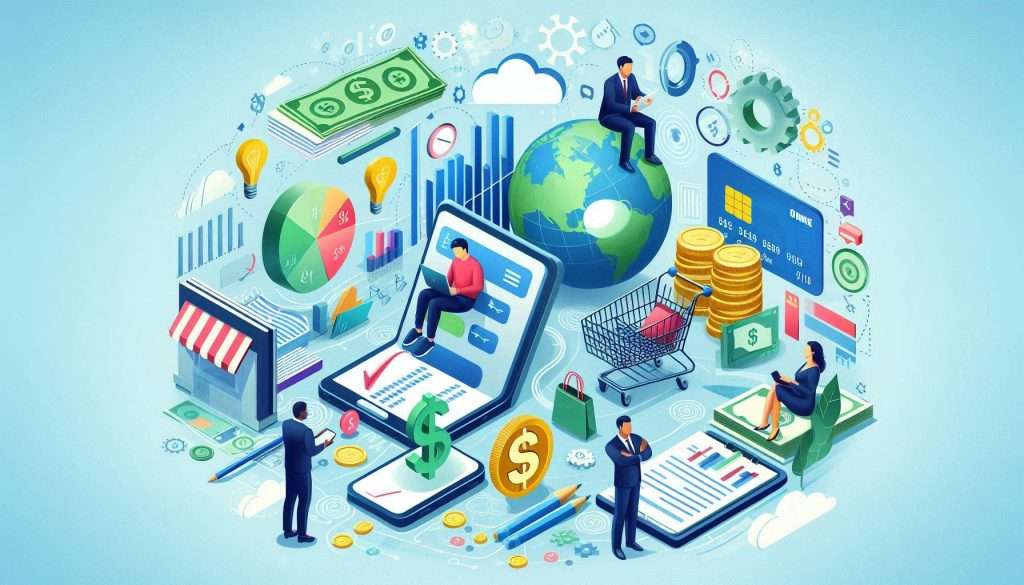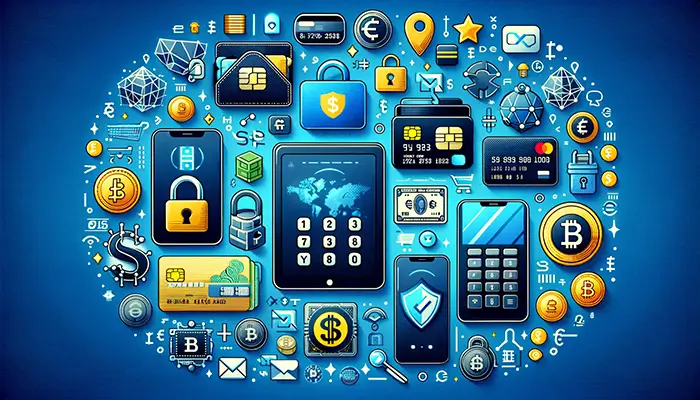AUTHOR : NUZAT SAYYED
In today’s fast-paced digital world, businesses[1] and consumers expect quick, secure, and efficient payment processes. The “seamless flow” of payment processing refers to the ability to handle financial transactions smoothly, without unnecessary delays or friction. From online purchases[2] to in-store payments, ensuring a seamless payment experience is crucial for both customer satisfaction and business operations. This article delves into the importance of seamless payment processing, the key technologies involved, and how businesses can optimize their payment systems[3] for enhanced efficiency and security.
What Is the Seamless Flow of Payment Processing?

The seamless flow of payment processing[4] refers to a smooth, uninterrupted series of actions that occur when a consumer makes a payment and when a business receives it. A seamless payment experience minimizes the friction that customers encounter while making transactions, making the process fast, easy, and secure. Whether it’s an in-person credit card swipe, a tap-to-pay option on mobile, or an online purchase, each transaction should happen quickly[5], securely, and with minimal effort from the consumer.
The Importance of Seamless Payment Processing
1. Customer Experience and Satisfaction
A smooth payment process is a key driver of positive customer experiences. Whether it’s a quick checkout process or the ability to use multiple payment methods, convenience is at the heart of customer satisfaction. Friction during payment—whether it’s unclear instructions, slow transactions, or failed payments—can lead to abandoned carts, lost sales, and frustration. By offering a seamless payment experience, businesses enhance their reputation and increase the likelihood of repeat customers.
2. Business Efficiency and Growth
For businesses, the flow of payment processing is not just about customer satisfaction—it’s also about operational efficiency. An efficient payment system reduces human error, minimizes manual intervention, and ensures faster processing of payments. This results in quicker access to funds, improved cash flow, and the ability to scale operations without bottlenecks. Seamless payments also enhance reporting and tracking, helping businesses make informed decisions.
3. Security and Fraud Prevention

Seamless payment processing doesn’t mean compromising on security. In fact, a smooth payment process should integrate robust security measures at every step. With increasing concerns about data breaches and fraud, businesses must adopt secure encryption, tokenization, and other safety protocols to protect sensitive customer information. A seamless flow ensures that security measures are invisible to the user but still effective in safeguarding transactions.
Key Technologies Enabling Seamless Payment Processing
The seamless flow of payment processing is made possible by a variety of technologies working behind the scenes. These technologies are designed to improve transaction speed, ensure security, and provide multiple payment options.
1. Payment Gateways
A payment gateway is the technology that connects a business’s payment system to the payment processor. It’s responsible for encrypting and securely transmitting payment information between the customer, merchant, and financial institutions. Payment gateways act as the intermediary that ensures transactions are processed quickly and safely, without exposing sensitive data to unnecessary risk.
2. Mobile Wallets and Contactless Payments
Mobile wallets like Apple Pay, Google Pay, and Samsung Pay offer consumers the convenience of storing their payment information securely on their mobile devices. These wallets allow for faster and more convenient payment methods such as NFC (Near Field Communication) or QR code scanning. Contactless payments, where customers simply tap their card or phone to pay, have become a popular option for quick transactions, further enhancing the seamless flow.
3. Tokenization

Tokenization replaces sensitive payment card information, such as credit card numbers, with a unique identifier called a token. This process helps reduce the risks of data breaches and fraud because the actual payment data is never stored or transmitted during the transaction. Tokenization enables businesses to securely store payment information while ensuring that sensitive data isn’t exposed at any point in the transaction flow.
4. Real-Time Payment Systems
Real-time payment systems, such as the RTP (Real-Time Payments) network in the U.S. or SEPA Instant Credit Transfer in Europe, allow businesses and consumers to make payments instantly. Unlike traditional systems, which may take hours or even days to process payments, real-time systems provide immediate settlement, making transactions quicker and more efficient for both parties.
5. AI and Machine Learning for Fraud Detection
Artificial intelligence (AI) and machine learning (ML) technologies are used to detect and prevent fraudulent transactions in real time. These systems analyze patterns of behavior, such as spending habits and transaction history, to identify potentially suspicious activity. By automating fraud detection, businesses can offer a seamless payment experience without compromising security.
How to Achieve a Seamless Payment Processing Flow
Businesses looking to optimize their payment processes must adopt a holistic approach that combines technology, security, and user experience. Here are a few strategies to enhance the flow of payment processing:
1. Integrate Multiple Payment Methods
Offering a wide range of payment methods is essential for creating a seamless experience for customers. From credit and debit cards to mobile wallets, buy-now-pay-later options, and even cryptocurrency, customers should be able to choose the method that works best for them. The more payment options you provide, the smoother the checkout process will be, which can lead to increased sales and customer loyalty.
2. Optimize for Mobile
With mobile commerce on the rise, businesses must ensure that their payment systems are optimized for mobile devices. This includes having a mobile-friendly website, a seamless mobile payment option, and easy-to-navigate checkout pages. A streamlined mobile payment experience can significantly boost conversions, as customers are more likely to complete a purchase if the process is quick and easy.
3. Ensure Fast and Efficient Payment Processing
Businesses should partner with reliable payment processors that can handle transactions quickly and securely. This minimizes delays in payment authorization and settlement, which is crucial for maintaining a seamless flow. Additionally, businesses should regularly test and update their payment systems to ensure they are functioning optimally and capable of handling high volumes of transactions during peak times.
4. Prioritize Security
While ensuring a smooth payment flow, businesses must not overlook security. Implement measures such as encryption, two-factor authentication, and fraud prevention tools to safeguard customer data. Compliance with industry standards such as PCI-DSS (Payment Card Industry Data Security Standard) is essential for maintaining both security and customer trust.
5. Monitor and Analyze Payment Data
Continuous monitoring of payment transactions helps businesses identify areas for improvement in the payment process. Analyzing transaction data provides insights into consumer behavior, payment trends, and any potential friction points in the flow. This data-driven approach allows businesses to adapt and optimize the payment experience over time.
Conclusion
The seamless flow of payment processing is essential for ensuring that transactions are fast, secure, and convenient for both consumers and businesses. By leveraging advanced technologies, offering multiple payment options, and prioritizing security, businesses can create a frictionless payment experience that boosts customer satisfaction, enhances operational efficiency, and helps drive growth.
FAQ
1. What is meant by the “seamless flow” of payment processing?
The “seamless flow” refers to the smooth, uninterrupted progression of a payment transaction, ensuring a quick and hassle-free experience for both businesses and consumers.
2. Why is seamless payment processing critical for businesses?
A seamless payment process helps businesses improve customer satisfaction, reduce transaction friction, and boost conversion rates by offering a fast, secure, and efficient checkout experience.
3. What technologies enable a seamless payment experience?
Technologies such as payment gateways, mobile wallets, contactless payments, tokenization, real-time payment systems, and AI-based fraud detection all contribute to a seamless and secure payment processing experience.
4. How can businesses optimize their payment processing flow?
Businesses can streamline their payment processing by offering multiple payment options, optimizing for mobile, ensuring fast processing, securing transactions, and analyzing payment data for continuous improvement.
5. How does mobile payment processing enhance the seamless flow?
Mobile payment methods, including Apple Pay and Google Pay, enhance the seamless flow by allowing customers to make quick, contactless payments through their smartphones, improving convenience and speed.





